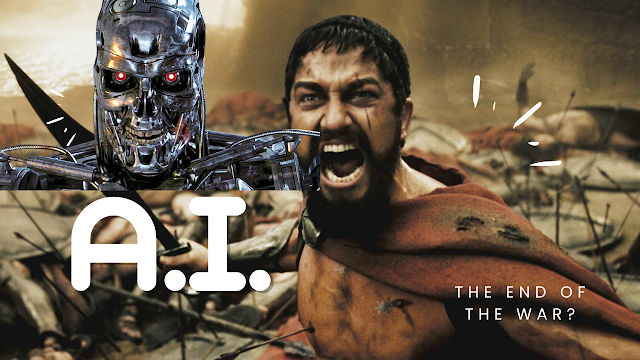Ai-warfare is the modern war of today! And the end of wars as we know It?
Monday, 24 July 2023. The Evolution of Modern Weapons and the Impact of Artificial Intelligence on Modern Warfare in the Last Decade
The last decade has witnessed significant advancements in modern weapon technologies, driven by rapid Artificial Intelligence (AI) developments.
This article explores the evolution of modern weapons over the past 10 years and their profound impact on modern warfare.
With AI integration, weapons systems have become more innovative, lethal, and versatile, revolutionizing the dynamics of military engagements.
We present three compelling examples highlighting the transformative effect of AI-powered weapons in modern conflicts.
Introduction
The 21st century has witnessed a paradigm shift in warfare, with modern weapons incorporating cutting-edge technologies such as Artificial Intelligence.
The integration of AI has transformed conventional weapons into sophisticated and autonomous systems with superior capabilities, adaptability, and precision. In this article, we delve into the evolution of modern weapons in the last 10 years and the transformative effects of AI on contemporary warfare.
Drones: Unmanned Aerial Vehicles (UAVs)
Over the past decade, drone technology has seen unprecedented growth, with AI at the core of its advancements. UAVs with AI algorithms have become indispensable assets in intelligence, surveillance, reconnaissance, and combat operations.
An MQ-9
taxiing in Afghanistan, 2007 (from Wikipedia)
AI-powered drones can autonomously navigate complex environments, identify targets, and execute precision strikes with minimal human intervention.
Example: The MQ-9 Reaper, a well-known AI-powered UAV, has been deployed extensively in conflict zones to conduct targeted strikes and gather critical intelligence. Its AI-enabled capabilities have dramatically enhanced military situational awareness and operational efficiency.
Autonomous Ground Vehicles
The evolution of autonomous ground vehicles marks another significant development in modern weaponry.
A Gladiator
Tactical Unmanned Ground Vehicle
AI-driven systems have enabled the deployment of uncrewed ground vehicles (UGVs) for various military tasks, including reconnaissance, logistics support, and explosive ordnance disposal (EOD). These vehicles can navigate challenging terrains, adapt to changing scenarios, and make real-time decisions to accomplish their objectives.
Example: The THeMIS (Tracked Hybrid Modular Infantry System) UGV, integrated with AI, is employed by several armed forces for reconnaissance and logistics support. Its autonomous capabilities enable it to conduct missions in hazardous environments, minimizing human exposure to potential threats.
AI-Enhanced Cyber Warfare
AI has also revolutionized cyber warfare, providing advanced offensive and defensive capabilities.
AI algorithms can detect and respond to cyber threats at unprecedented speeds, making cyber-attacks more precise and efficient.
On the offensive side, AI enables the development of sophisticated malware and cyber weapons capable of bypassing traditional security measures.
Example: Stuxnet, a highly sophisticated cyber-weapon believed to be developed by a nation-state, targeted Iran's nuclear facilities. It used AI to evade detection, infiltrate the systems, and disrupt uranium enrichment processes, significantly impacting Iran's nuclear program.
The Impact of AI-Powered Weapons on Modern Warfare.
The integration of AI into modern weapons has had profound implications on contemporary warfare:
Precision and Reduced Collateral Damage: AI-powered weapons offer enhanced accuracy, reducing the risk of civilian casualties and collateral damage during military operations.
Enhanced Situational Awareness: AI enables real-time data analysis, providing military commanders comprehensive situational awareness, better decision-making, and improved battlefield intelligence.
Reduced Risk to Human Personnel: Autonomous systems can perform high-risk missions, reducing the risk to human soldiers' lives and allowing them to focus on strategic planning and decision-making.
Conclusion
The evolution of modern weapons, fueled by AI technology, has redefined the warfare landscape over the last decade.
AI-powered weapons, such as drones, autonomous ground vehicles, and cyber weapons, have improved precision, adaptability, and situational awareness in military engagements.
However, along with the benefits, the use of AI in modern warfare also poses ethical challenges, including concerns about autonomous decision-making and the potential misuse of advanced technologies.
As AI advances, it is essential to balance leveraging its potential for military advantage and ensuring responsible and ethical use in modern conflicts.
There is hope for integrating artificial intelligence and robotics into the battle arena.
And this is the definitive elimination of humans from the battlefields!
Impending World War 3







Comments
Post a Comment
Hello, feel free to write your opinion.